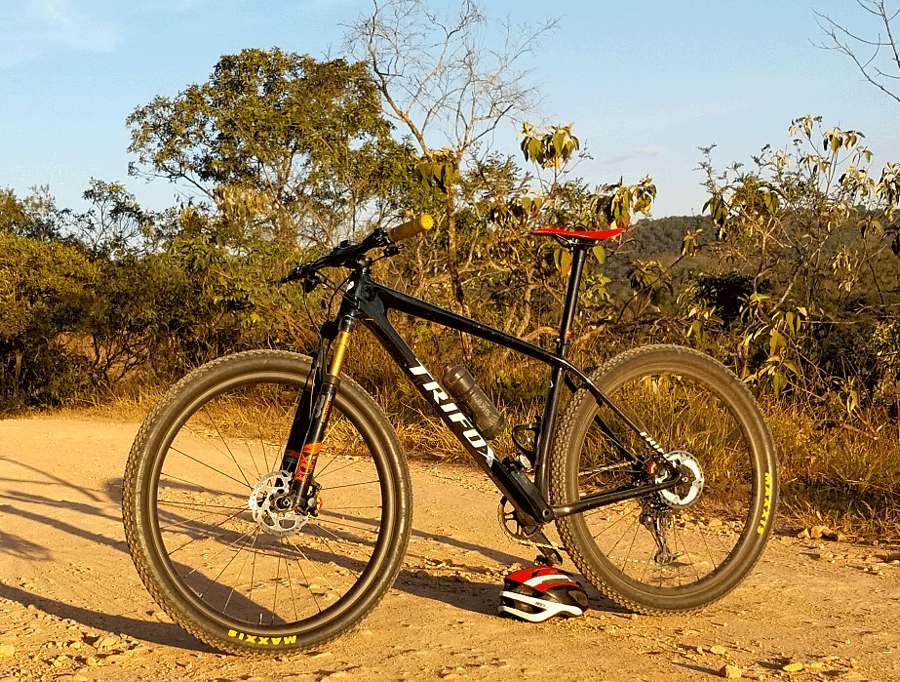
Cycling is one of the most popular outdoor activities and an excellent way to stay healthy and fit. But just like any other physical activity, cycling requires the right gear to ensure maximum performance and safety. One of the key components of your bike is the wheelset, and if you want to unleash your cycling potential, you need a reliable and high-quality wheelset. That's where Trifox Tire and Wheel comes in. 1. High-quality materials: Trifox Tire and Wheel uses only the highest quality materials in their wheelsets, including carbon fiber. These materials offer superior strength, durability, and lightness, which translates into improved performance and agility on the road. With Trifox Tire and Wheel, you will feel a noticeable difference in the way your bike handles, accelerates, and brakes, even on rough terrain. 2. Superior aerodynamics: Trifox Tire and Wheel's wheelsets have been designed and tested to provide superior aerodynamics, which is crucial for speed and efficiency on the road. By reducing wind resistance, Trifox Tire and Wheel's wheelsets allow you to maintain your speed with less effort, which means you can ride longer and farther without feeling exhausted. Moreover, Trifox Tire and Wheel's wheelsets have a sleek and modern design that will make your bike look faster and cooler. 3. Versatility: Trifox Tire and Wheel offers a wide range of wheelsets to fit different cycling styles and preferences. Whether you're a road cyclist, or a triathlete, Trifox Tire and Wheel has a wheelset for you. Moreover, Trifox Tire and Wheel's wheelsets come in different sizes, widths, and colors, so you can customize your bike to your liking. With Trifox Tire and Wheel, you can upgrade your bike without breaking the bank or compromising on quality. 4. Warranty and customer service: Trifox Tire and Wheel stands behind their products and offers a generous warranty and customer service. If you experience any issues with your wheelset, Trifox Tire and Wheel will repair or replace it promptly. Moreover, Trifox Tire and Wheel's customer service team is friendly, knowledgeable, and available to answer any questions or concerns you may have about your purchase. With Trifox Tire and Wheel, you can buy with confidence and peace of mind. 5. Positive reviews and feedback: Trifox Tire and Wheel has received numerous positive reviews and feedback from satisfied customers all over the world. Customers praise Trifox Tire and Wheel's wheelsets for their quality, performance, and value for money. Moreover, many professional cyclists and teams have chosen Trifox Tire and Wheel as their supplier of choice, which is a testament to the brand's reputation and credibility in the cycling industry. Conclusion: if you want to unleash your cycling potential and take your cycling to the next level, you need a wheelset that can deliver high performance, reliability, and versatility. Trifox Tire and Wheel offers all these benefits and more, with their high-quality materials, superior aerodynamics, versatility, warranty, and positive reviews. With Trifox Tire and Wheel on your bike, you will be able to ride faster, longer, and with more confidence than ever before. So why wait? Upgrade your bike with Trifox Tire and Wheel today and start living your cycling dream.
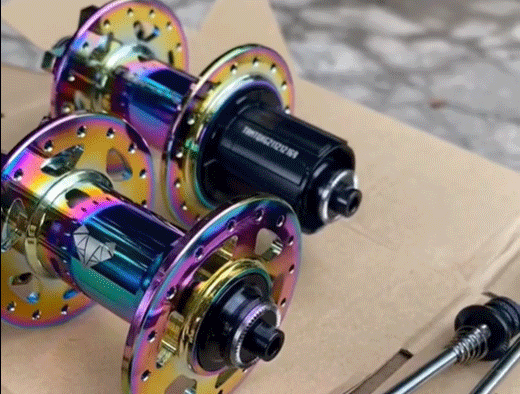
Smooth and seamless cycling is every cyclist's dream. And, the performance of your bike's hub is a crucial factor in determining how smooth your ride will be. If you're a frequent cyclist, the wear and tear on your bike's hub can start to show through in the form of decreased performance. A hub overhaul might be what your bike needs to restore the optimal performance you need. In this article, we will take you through everything you need to know about hub overhaul so you can enjoy a smooth riding experience. 1. What is a Hub Overhaul? A hub overhaul is a maintenance procedure where the bearings are removed, cleaned, lubricated, and re-installed for optimal performance. The process often involves taking apart the hub, which might require some specialized tools, but the benefits of a well-maintained hub make it worth it. 2. Signs Your Bike's Hub Needs Overhaul You might want to consider a hub overhaul if: Your bike's wheels don't spin smoothly. There are creaking sounds coming from the hub The wheels wobble or have excessive play If oil or dirt leaks from the hub These are signs that the bearings need attention and that your bike's performance will significantly improve after an overhaul. 3. Steps for a Hub Overhaul Here is a step-by-step process for a hub overhaul: Remove the wheel from the bike. Remove the quick-release skewer Remove the cassette or the freewheel, if present Take the hub apart Remove the old bearings Clean the hub using a solvent Grease the bearings Re-install the bearings Re-assemble the hub Re-install the quick-release skewer Attach the wheel back onto your bike Note that this process may differ depending on whether you have a freehub or a freewheel and whether you have a front or rear hub, but the basic process is the same. 4. Benefits of a Hub Overhaul A hub overhaul comes with several benefits, including improved performance, better handling, smoother rolling, and extended lifespan. You can expect your bike to roll faster, smoother, and with less resistance after completing a hub overhaul. It is also more cost-effective than purchasing new wheels, which can cost hundreds of dollars. Conclusion: Maintaining your bike's hub properly is essential for ensuring optimal performance and durability. By dedicating some time and effort into hub overhaul, you can get your bike running smoothly and efficiently again. Whether you're a competitive cyclist or a casual rider, a hub overhaul is an investment worth considering. We hope this guide has been helpful and informative as you take steps to keep your bike running efficiently.
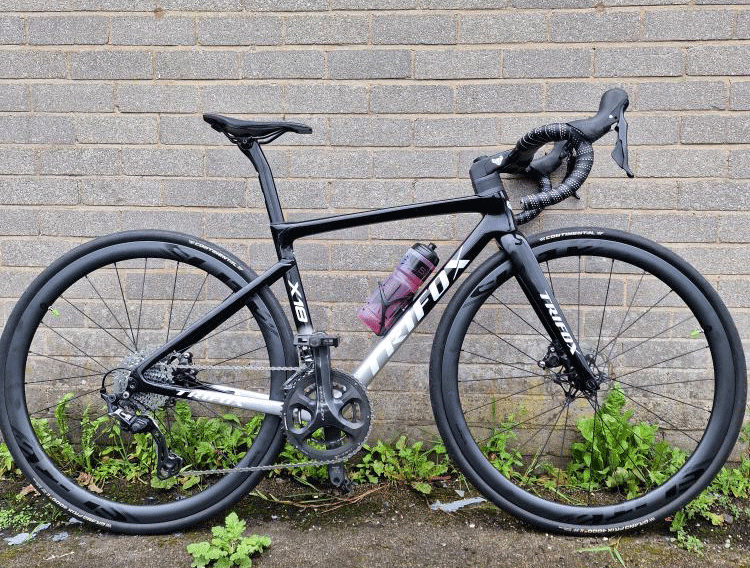
Are you looking for a competitive edge in your road biking? Look no further than a carbon road bike frame. Carbon fiber has become the material of choice for many high-performance bikes. But what exactly makes it so special? 1. Lightweight: Carbon fiber is a material that provides unparalleled weight savings. This is one of the biggest reasons why carbon road bike frames are so popular among riders aiming for top performance. Compared to other materials like aluminum or steel, carbon fiber is far lighter, which means it requires less energy to move the bike forward. A lighter bike also means you can climb hills and accelerate quicker with less effort. 2. Stiffness: Another advantage of a carbon road bike frame is the stiffness it provides. Stiffness refers to the bike's ability to resist flexing, especially during hard pedaling or sprinting. Stiffness is directly linked to responsiveness, which means a stiffer frame can make for more precise handling. Carbon fiber offers more stiffness than other materials, which is why it's often favored by professional racers. 3. Durability: Because carbon fiber is a synthetic material, it can be molded into customizable shapes to fit a rider’s needs. Durable and resilient, it’s also resistant to rust and corrosion. In a sport where crashes occur, carbon fiber is known for becoming more durable than aluminum and steel which tend to dent or deform in the same scenario. As long as you take care of it, a carbon bike frame will last as long as a traditional aluminum or steel bike frame. 4. Aesthetics: Looks aren't everything, but it's hard to deny that carbon fiber looks cool. Without a doubt, it attracts attention. The woven pattern of carbon fiber can create a sleek, distinctive look that makes you stand out on the road. Be it a glossy, unidirectional finish or a matte black polished surface, carbon fiber frames tend to look much fancier. 5. Aerodynamics: Performance-focused designs on carbon fiber road bikes offer aero-dynamic benefits to complement aerodynamic riding positions. Carbon fiber allows designers to shape the frame to create smooth airflows in conjunction with aerodynamic riding positions. It has direct effects on the rider's position, enabling them to accelerate quickly and maintain higher speeds more effectively. Conclusion: Carbon road bike frames offer unbeatable benefits over their traditional aluminum or steel counterparts. In addition to the great performance advantages, carbon frames also look impressive and offer customization options. The only drawback is the price. Carbon road bike frames don't come cheap. However, investing in a carbon fiber bike frame may just be that one thing that could uplift your performance for maximum rewards. Try it out to see the difference yourself.
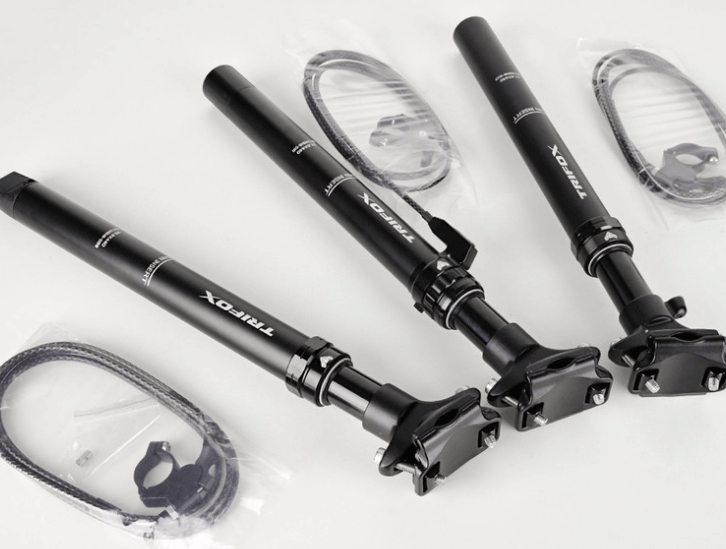
Have you ever experienced discomfort and pain in your lower back while trying to maneuver your bicycle? This issue can be especially frustrating when you're cycling in rough terrain and need to adjust your bike's saddle frequently. Fortunately, a bicycle dropper seatpost can provide a perfect solution to this frustrating problem. This device is designed to raise and lower your saddle quickly, so you can make quick adjustments on the spot without having to stop your bike. 1. Improved Control A dropper seatpost gives you better control over your bike in rough terrain. By lowering your saddle, you can shift the center of gravity downwards- giving you a lower, more stable position on your bike. This way, you can tackle steep jumps and drops with ease. Additionally, a lower saddle can make it easier to maneuver tight corners as you have more control over your bike's movements. Dropper seatposts give you the ability to quickly adjust your saddle height to match the terrain you're cycling on, which results in an all-around better riding experience. 2. Increased Comfort Dropper seatposts can help to reduce fatigue and pain in your lower back during long rides. When riding through rough terrain, it's typical to alternate between standing and sitting on your bike saddle. However, when you make frequent adjustments, the constant saddle height changes can trigger muscle pain and fatigue. A dropper seatpost provides a comfortable and seamless way to adjust your saddle without interrupting your rhythm and putting a hurting strain on your muscles 3. Enhancing your biking skills Mastering a bicycle's dropper sea t post can be tricky since it requires you to maintain control of your bike while simultaneously adjusting your saddle height. However, once you've mastered it, you'll have greater versatility and control over your bike and have the ability to tackle difficult terrain easily. A dropper seatpost gives you the freedom to experiment with different riding positions as it opens up new possibilities when cycling. As you get more comfortable using a dropper seatpost to maneuver your bike, you'll be able to take on steep climbs and drops that you might not have felt comfortable doing previously. 4. Sleek design A dropper seatpost can give your bicycle a sleek and modern look. With its minimalist design and smooth, seamless adjustability, it can make your bike look more contemporary and up to date. Additionally, dropper seatposts are designed to be durable, so you can have confidence in its performance and longevity. Conclusion: Adding a dropper seatpost to your bike's setup is an excellent investment if you want to improve your control, enhance your skills, increase your comfort, and give your bike a modern look. Make sure to choose a reputable brand that makes high-quality dropper seatposts. With a reliable dropper seatpost, you can skyrocket your biking abilities and tackle even the toughest of terrain with ease.

Riding a bike is one of the best ways to stay fit, commute, and explore your surroundings. However, if you're an avid biker, you'll know how uncomfortable long rides can be, especially when your handlebars are too low. Fortunately, there's a solution to this problem: handlebar stem risers. Handlebar stem risers can elevate your ride and give you more control, making your rides more comfortable and enjoyable. In this blog, we'll explore the benefits of handlebar stem risers, focusing on the Alloy Bike Stem Riser SR100 suitable for customers with relatively low handlebars. Adjustable Height: One of the biggest benefits of handlebar stem risers is that they offer an adjustable height. The Alloy Bike Stem Riser SR100 can increase the height of the stem by about 50mm to 85mm by adjusting the bushing. This adjustability caters to riders of different heights and body types, making biking a more comfortable experience. Improves Comfort: When you ride a bike, you put a lot of pressure on your arms, wrists, and back. This pressure can cause discomfort and even pain, making long rides almost unbearable. Handlebar stem risers can help improve your comfort by putting you in a more upright position, reducing the pressure on your upper body. This little adjustment can make a big difference in how you feel after a ride. More Control: Another advantage of handlebar stem risers is that they give you more control over your bike. With the improved height and more upright position, you can have a clearer view of your surroundings, see obstacles ahead of you, and maneuver through rough terrain with ease. This added control can improve your biking experience and keep you safe on the road. Simple Installation: Installing handlebar stem risers doesn't have to be complicated or time-consuming. The Alloy Bike Stem Riser SR100 is easy to install, and the process won't take up much of your time. Simply attach the riser to your existing handlebar stem and adjust the height that works best for you. It's that simple. Versatility: Handlebar stem risers are versatile accessories that can fit most bikes and handlebar types. Whether you're into road biking, mountain biking, or casual biking, there's a handlebar stem riser that can cater to your needs. The Alloy Bike Stem Riser SR100 is suitable for customers with relatively low handlebars and can be adjusted to fit most bike models. Conclusion: Handlebar stem risers can elevate your ride and give you more control, making your biking experience more comfortable and enjoyable. The Alloy Bike Stem Riser SR100 is an excellent option for customers with relatively low handlebars, offering an adjustable height, improved comfort, more control, easy installation, and versatility. If you're looking to upgrade your ride and improve your biking experience, consider installing a handlebar stem riser like the Alloy Bike Stem Riser SR100. You won't regret it!
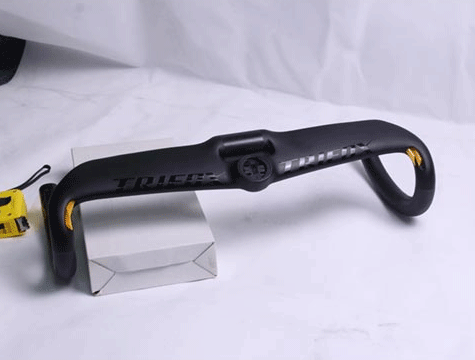
As a cyclist, have you ever felt like you’re working harder than you should be? Are you struggling to keep up with your cycling buddy, despite all the miles you’ve put in? If so, you might want to consider investing in a set of aerobars for your road bike. Aerobars are an accessory that can significantly improve the aerodynamics of your bike and help you go faster with less effort. In this blog post, we will take a closer look at the benefits of aerobars, as well as introduce you to one of our favorites on the market: The aerobars for Road Bike TC20AF. 1. What are Aerobars? Aerobars are accessories that attach to your road bike’s handlebars and extend out in front of you, allowing you to adopt a more aerodynamic riding position. By tucking in close to your bike, you reduce your body’s exposure to wind resistance, allowing you to move through the air with less drag. Aerobars consist of a set of extended bars, which attach to your bike’s existing handlebars, allowing you to lean on them comfortably. Some models also include a set of armrests, which further reduce the pressure on your hands and wrists when you’re in the aero position. 2. Benefits of Using Aerobars By using aerobars, you can achieve a more aerodynamic riding position, which can lead to several benefits, including increased speed, improved endurance, and reduced fatigue. When you are in the aero position, you are allowing your body to cut through the wind resistance more efficiently, which means that you’re using less energy to maintain your speed. Additionally, by reducing the pressure on your hands and wrists, aerobars can help to reduce fatigue, allowing you to ride for longer periods without discomfort. Finally, if you’re competing, aerobars can give you a competitive edge, allowing you to shave crucial seconds off your race time. 3. Features of the TC20AF Carbon Drop Bar One of our favorite aerobars on the market is the TC20AF Carbon Drop Bar. This aerobar is designed specifically for compact road bikes and features a unique aerofoil shape, which complements the latest aero road bikes. The tops are redesigned with smooth, aerodynamic curves and are constructed of TC20 full carbon fiber, which provides strength and stiffness while keeping weight to a minimum. The bar features internal cable routing for less drag, sleek aesthetics, and reliable setup of manual or electronic gear systems. The TC20AF also comes with a stopwatch bracket, which is perfectly compatible with Garmin and Bryton stopwatches. 4. How to Install Aerobars on Your Road Bike Installing aerobars on your road bike is a fairly straightforward process. You’ll need a few tools, including a hex key, pliers, and a torque wrench to get started. First, remove your bike’s existing handlebar tape and any attachments. Next, remove the existing stem bolt and replace the stem cap with the aerobar clamp. Attach the aerobars to the clamp and make any necessary adjustments to the length and angle. Finally, install the brake and shifter cables through the aerobar extensions, add any armrests or pads, and re-wrap your handlebars.、 If you’re looking to improve your cycling performance, aerobars are a great accessory to consider. They allow you to assume a more aerodynamic position while reducing fatigue and improving your endurance. The TC20AF Carbon Drop Bar is one of the best aerobars on the market, featuring internal cable routing and a stylish aerofoil design. Installation of aerobars is straightforward, but if you're not confident in doing it yourself, it’s best to take your bike to a professional. So what are you waiting for? Upgrade your road bike with a set of aerobars and take your cycling performance to the next level.
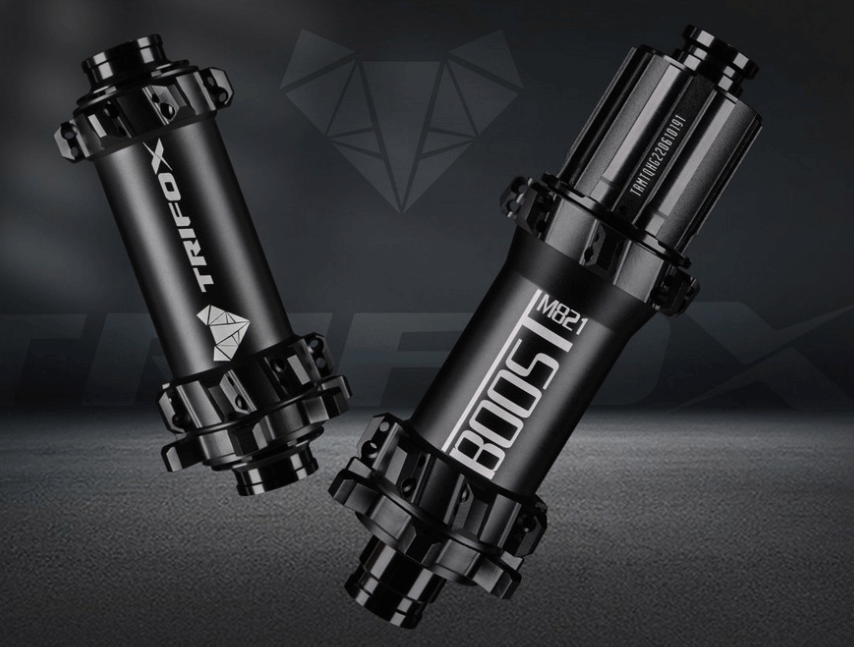
As a mountain biker or bicycle enthusiast, you may find yourself in a situation where you need to convert your bike's quick-release hub to a thru-axle. While this may seem like a daunting task, it is actually quite doable with the right tools and knowledge. The benefits of a thru-axle include increased stiffness, improved handling, and better alignment between your wheel and frame. So, if you're ready to make the switch, let's dive into how to convert a quick-release hub to a thru-axle. Step 1: Identify your Hub Specs Before you start the conversion process, you need to identify the specs of your hub. This includes the size and spacing of the hub, which will determine what kind of thru-axle you need. For example, some mountain bikes use hubs with a 135mm spacing and 9mm axle diameter. You'll need to find a thru-axle with the same specs in order for it to work with your bike. If you're not sure what specs you have, you can usually find this information through your bike's manufacturer or by measuring the hub yourself. Step 2: Remove the Quick Release The next step is to remove the quick release skewer from your bike. This can usually be done by unscrewing the end caps of your quick-release hub and gently pulling out the skewer. Make sure to keep any washers or spacers that may be attached to the skewer. Step 3: Install the Thru-Axle Now it's time to install your new thru-axle. Make sure it has the correct size and spacing for your hub, and determine the orientation of the threads. Some thru-axle designs have a lever or handle that allows you to tighten or loosen the axle by hand, while others require a tool. Follow the manufacturer's instructions for installation, being sure to grease the threads to prevent corrosion or seizing. Step 4: Adjust your Disc Brakes If you have disc brakes on your bike, you'll need to adjust the brake calipers to accommodate the new thru-axle. This may require loosening or removing the brake bolts and repositioning the caliper. Be sure to align the brake pads with the rotor correctly, and test the brakes thoroughly before riding. Step 5: Test Ride and Adjust After you've installed the thru-axle and adjusted your disc brakes, it's time to test ride your bike. Take it for a short spin around the block or a nearby trail, and check for any unusual noises or vibrations. If everything seems to be working well, continue to ride and make any necessary adjustments along the way. Conclusion: Converting your quick-release hub to a thru-axle may seem like a big undertaking, but it's actually a fairly simple process. By following these steps and using the right tools, you can improve the performance and handling of your bike with a few easy modifications. Remember to always consult the manufacturer's instructions and take your time to ensure a safe and successful conversion. Happy riding!
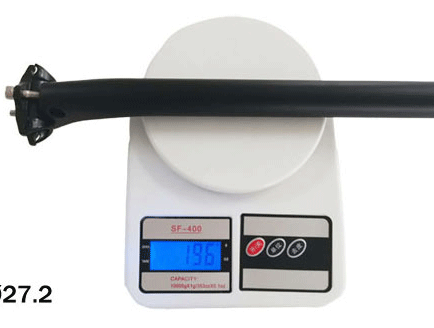
If you have been looking for the perfect seatpost for your mountain bike, the Trifox 400mm Carbon Layback MTB Seatpost CDS100 is worth considering. This seatpost offers enhanced comfort, durability, and lightness, making it perfect for all your mountain biking needs. 1. Carbon Layback Design - The Trifox 400mm Carbon Layback MTB Seatpost CDS100 boasts a carbon layback design that provides a full range of seat angle adjustment. This means you can easily adjust your seat angle to your preferred position, giving you maximum comfort and performance. 2. Lightweight - It has 27.2 seatpost, Weighing in at only 180g, this seatpost is incredibly lightweight. This means you can easily shave off some weight from your bike, which is essential for competitive mountain biking. The titanium screws add to its lightweight nature while also increasing durability. 3. Durability - The Trifox 400mm Carbon Layback MTB Seatpost CDS100 is made from high-quality carbon fiber, which is known for its durability and lightweight nature. This means that the seatpost can withstand the toughest of terrains and obstacles that you may encounter while mountain biking. 4. Easy to Install - The Trifox 400mm Carbon Layback MTB Seatpost CDS100 is easy to install, even if you are not an expert in bike maintenance. You can install it yourself or have a professional do it for you. 5. Value for Money - The Trifox 400mm Carbon Layback MTB Seatpost CDS100 is a great value for money. Its carbon layback design, lightweight, and durability make it a top choice for mountain bikers of all levels. In conclusion, the Trifox 400mm Carbon Layback MTB Seatpost CDS100 is an excellent seatpost that offers comfort, durability, and performance for mountain bikers looking to enhance their riding experience. Its carbon layback design, lightweight nature, durability, and ease of installation make it an excellent value for money. So, if you are looking for a seatpost that can withstand the toughest terrains and provide comfort and performance, the Trifox 400mm Carbon Layback MTB Seatpost CDS100 is definitely worth considering
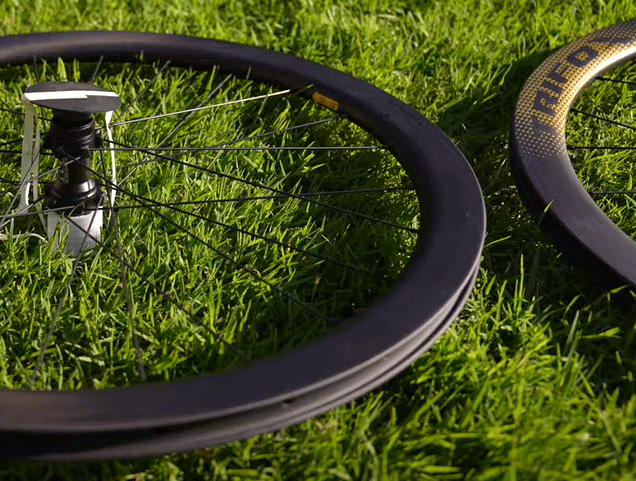
As technology evolves, different bike components have also evolved. One of the most vital components of every bike is the hub, which is where the wheel is connected to the bike's frame. The hub has two types - freehub and freewheel. Although they both function similarly, there are essential differences between these two components that every cyclist should know. Firstly, let's start by defining what a freehub is. A freehub is a modern hub design where the freewheel mechanism is built into the hub body. The Freehub mechanism consists of a ratchet mechanism that allows the cassette to rotate in only one direction while being held in place by the circular locking ring. The result of this mechanism is a more reliable and more efficient transmission system compared to freewheels. It also enables fast and straightforward cassette swapping, allowing riders to change gears more efficiently to adapt to various terrain and riding conditions. On the other hand, a freewheel is a bicycle hub that has a ratcheting mechanism that's contained within. Compared to the Freehub, a freewheel can only accommodate a freewheel where the cogs and ratcheting mechanism are all part of one unit. When you remove a freewheel, you need to replace the whole unit. Freewheels were popularly used on road bikes and mostly used on bikes from the 1970s to the 1990s. They were replaced by the Freehub that provides smoother and more efficient power transfer. Another significant difference between Freehub and Freewheel is the location of the hub bearings. In a Freehub, the bearings are located within the hub body, which means that any time that they require service, they can easily be accessed and adjusted. On the other hand, the bearings of a freewheel are situated inside the freewheel unit itself, making it more challenging to extract and replace. Freewheels are less efficient and less reliable compared to the Freehub. It is also essential to note the compatibility of both Freehub and Freewheel. Freehubs allow for compatibility with cassettes of up to 11 speeds, which is quite impressive compared to freewheels, which only allow for cassettes with a maximum of seven speeds. The Freehub's larger diameter also makes it stiffer, making it a more durable hub system. Lastly, the sound of freehubs and freewheels differ. Freehubs tend to make a quieter and softer sound compared to freewheels, which tend to make a distinct clicking sound when freewheeling or coasting. Some cyclists like to hear that clicking sound since it's a sign that the rear wheel is moving. In summary, while both Freehub and Freewheel function to connect the wheel to the bike frame, they have significant differences. In terms of efficiency, reliability, and convenience, the Freehub takes the crown. It is more efficient, reliable, sturdier, and more compatible with various cassette speeds compared to the Freewheel. Therefore, if you're in the market for the best wheel hub for your bike, it's essential to consider the advantages and disadvantages of both Freehub and Freewheel before making a decision.

















